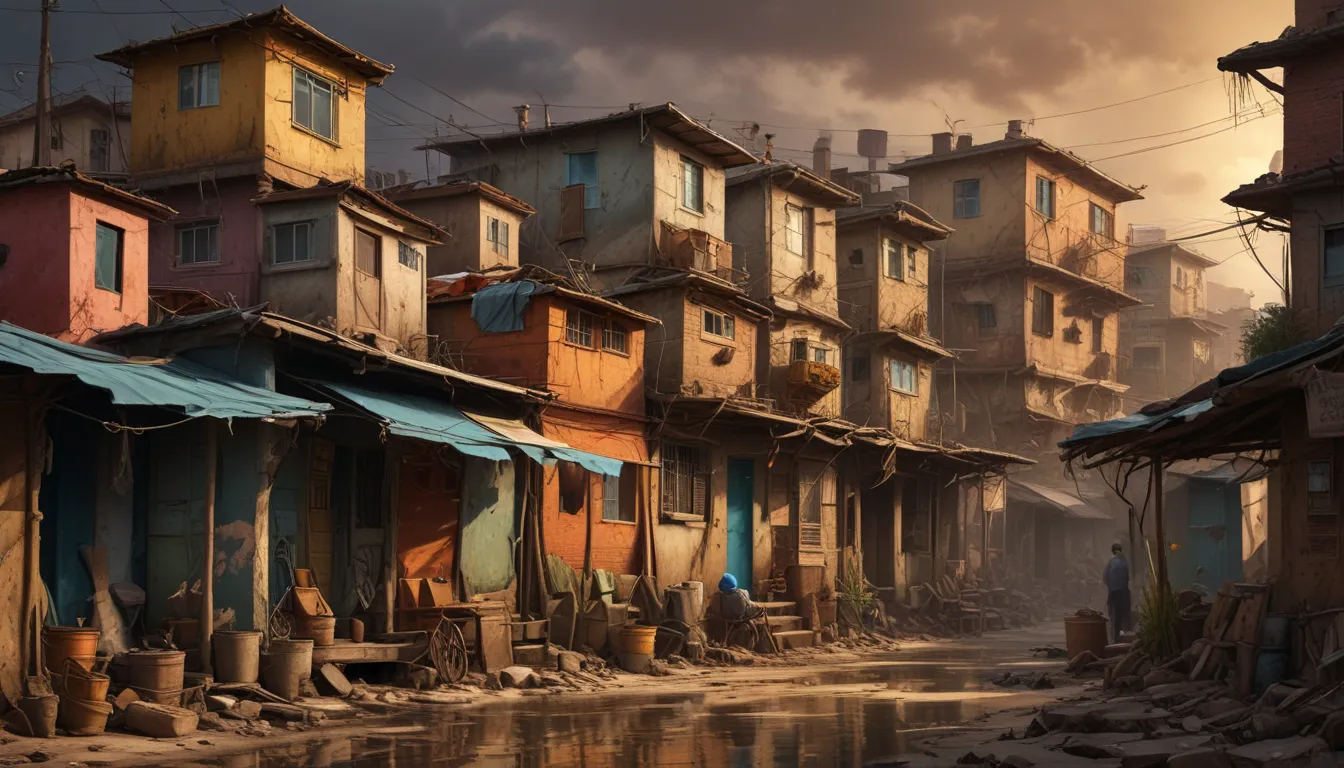A Note About Images: The images used in our articles are for illustration purposes only and may not exactly match the content. They are meant to engage readers, but the text should be relied upon for accurate information.
In a world where slums are often synonymous with poverty and hardship, it is essential to acknowledge the complexity and resilience of these communities. Beyond the challenges they face, slums are spaces teeming with creativity, entrepreneurship, and cultural diversity. Let’s delve into the extraordinary facts about slums that shed light on their unique dynamics, struggles, and potential for positive change.
Unveiling the Reality of Slums
The Global Presence of Slums
Did you know that over 1 billion people, representing about a third of the urban population worldwide, reside in slums? The rapid urbanization in developing countries has fueled the growth of these informal settlements as individuals seek better opportunities in urban areas.
A Hub of Creativity and Innovation
Despite the difficult living conditions, slums often serve as breeding grounds for creativity and entrepreneurship. Street vendors, artists, and musicians showcase their talents within these vibrant spaces, contributing to the local economy and fostering a sense of hope within the community.
Cultural Melting Pots
Slums are rich in cultural diversity, housing communities with varied languages, traditions, and customs. This diversity not only enriches the tapestry of the neighborhood but also promotes tolerance, understanding, and the exchange of ideas among residents.
Catalysts for Grassroots Movements
Grassroots movements thrive in slums, advocating for improved living conditions, basic rights, and empowerment of marginalized communities. These movements address critical issues such as access to clean water, healthcare, education, and housing, driving social change and challenging inequalities.
Engines of Informal Economies
Informal economies flourish within slums, as residents create livelihoods through small businesses, street markets, and other informal activities. Despite their informal nature, these economies significantly contribute to the local economy and sustain the community.
Driving Urban Innovations
Facing challenges head-on, slums often spark innovative solutions to urban issues. From resourceful recycling techniques to sustainable construction practices, residents find creative ways to maximize limited resources and reduce environmental impact.
Nurturing Strong Community Bonds
In the face of adversity, slums are known for their close-knit communities. Residents come together to support one another, share resources, and provide assistance during times of need, fostering a sense of belonging and resilience within the community.
Leading the Charge for Change
Slums play a pivotal role in advocating for urban policy reforms and urging governments to prioritize affordable housing and inclusive urban development. Social movements and advocacy efforts by slum dwellers have led to positive changes in various regions, driving towards a more equitable future for all.
Embracing a Brighter Future
In conclusion, slums present a complex reality intertwined with stories of resilience, creativity, and community strength. It is crucial to understand the challenges faced by slum dwellers to pave the way for inclusive and sustainable urban environments. By addressing the root causes of slum formation and prioritizing access to basic amenities, education, and healthcare, we can uplift the lives of those living in these marginalized communities.
Frequently Asked Questions
Q: What are slums?
A: Slums are densely populated informal settlements characterized by inadequate housing, poor infrastructure, and lack of basic amenities.
Q: Why do slums exist?
A: Slums often emerge due to rapid urbanization, rural-urban migration, and insufficient affordable housing by governments.
Q: Are slums only found in developing countries?
A: While more common in developing nations, slums can also exist in developed countries on a smaller scale.
Q: What challenges do slum dwellers face?
A: Slum dwellers experience challenges including lack of clean water, sanitation, healthcare, education, and decent employment opportunities.
Q: Are there positive aspects to slums?
A: Yes, slums exhibit resilience, community cohesion, and innovative solutions developed by residents to address their needs.
Q: How can we improve living conditions in slums?
A: Improving living conditions in slums requires investment in infrastructure, provision of amenities, access to education and healthcare, and empowering slum dwellers in decision-making processes.
Your Feedback Matters
We value the contribution of real users like you to ensure the accuracy and reliability of the content we share. Our dedicated editors meticulously review each submission to uphold the highest standards of credibility and authenticity in delivering engaging and trustworthy information. Trust in our commitment as you explore and learn with us on this enlightening journey through the world of slums.






